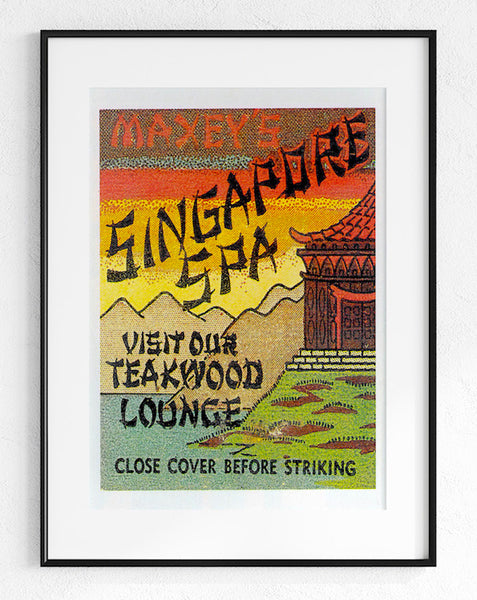Igniting Creativity: A Brief History of Matchbook Art
Matchbooks, those small, unassuming items that once held the power to spark a flame, have served as canvases for a unique form of art. Matchbook art, a niche but fascinating genre, has captivated artists and collectors alike. In this post we delve into the captivating history of matchbook art, tracing its origins and evolution.

Vintage Teakwood Lounge Matchbook Cover Digital Download Print
The Birth of Matchbooks
Matchbooks, as we know them today, were first patented in the United States in 1892 by Joshua Pusey. Before the creation of matchbooks, wooden and paper matchsticks were sold separately, making fire-starting a somewhat tedious and often dangerous task. Pusey's invention made lighting a fire more accessible, convenient, and safe. These early matchbooks featured simple designs and served a purely functional purpose.
Vintage Comfortably Cool Penguin matchbook cover digital download print.
The Artistic Evolution
Matchbook manufacturers soon realized the potential to use matchbook covers as advertising space, and this paved the way for the early designs. They began featuring brand logos and slogans to promote various businesses, making matchbooks a practical and portable form of advertising. However, it wasn't until the early 20th century that matchbook art began to flourish artistically.
Vintage Neptune Beach matchbook cover digital download print
The Golden Age of Matchbook Art
The true golden age of matchbook art can be traced back to the 1920s and 1930s. During this time, advertisers hired skilled artists to create stunning and eye-catching designs on matchbook covers. These mini masterpieces often showcased intricate illustrations, vibrant colors, and clever slogans, making them highly collectible. Matchbooks were no longer just a means to light a fire; they became tiny works of art.
Vintage RCA Victor matchbook cover art digital download print
Matchbooks in World War II
Matchbooks played a crucial role during World War II. Not only were they used to light cigarettes for soldiers in the trenches, but they also featured patriotic and morale-boosting designs. These matchbooks became a symbol of unity and support, with artwork often featuring military motifs and slogans.
The Decline and Resurgence
As the 20th century progressed, matchbooks began to lose their popularity. Disposable lighters and smoking bans in public places reduced the need for matchbooks. The decline of matchbooks also led to a decrease in matchbook art. However, with the resurgence of interest in vintage and retro items, matchbook art has experienced a renaissance in recent years.
Collecting Matchbook Art
Collectors today avidly seek out vintage matchbooks and matchbook art. These miniature artworks offer glimpses into the past, showcasing the design trends, advertising strategies, and cultural sentiments of bygone eras. Matchbook art collectors often frequent antique stores, online marketplaces, and even specialized trade shows to expand their collections.
Matchbook art is a unique and often overlooked aspect of artistic history. These tiny canvases have been a medium for creativity, advertising, and cultural expression throughout the 20th century. The evolution of matchbook art from functional fire-starters to artistic collectibles tells a fascinating story of how art can flourish even in unexpected places. Whether you're an artist, collector, or simply intrigued by the art of the past, exploring matchbook art is a journey through a creative history that once sparked both flames and imaginations.









